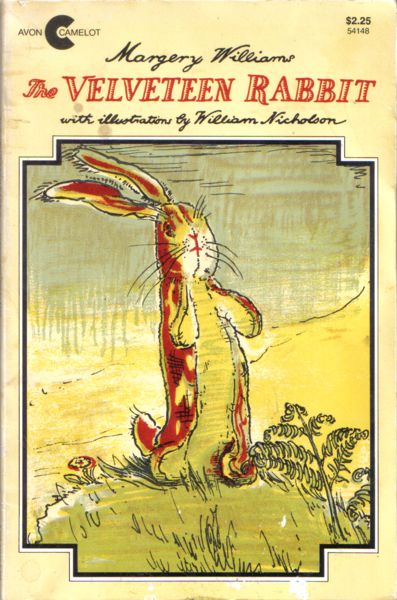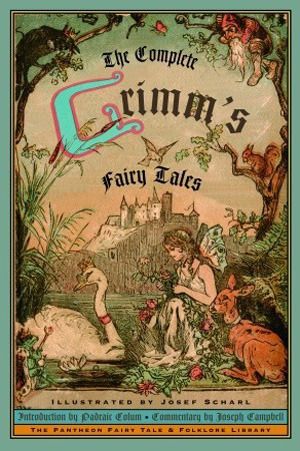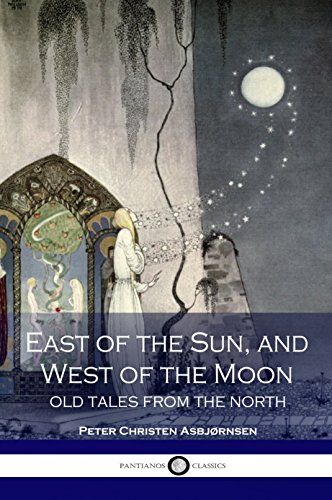
20 Public Domain Children’s Books
If you’re creating art, using classic books in your library, or want to read free books, public domain children’s books are a great option! From picture books to lesser-known classics, start with these.
What do we mean by public domain children’s books?
The public domain includes creative works that are no longer under copyright or anyone’s intellectual property. Copyright means exactly what is say: the right to copy. For books, this means any publisher can create their own copies of public domain books to sell. That’s why there are hundreds of editions of Shakespeare’s plays and Pride and Prejudice on the shelf in the bookstore. It can also mean way more freedom to create reimaginings and retellings. That’s why you see so many Great Gatsby retellings coming out this year — the book finally entered the public domain in January 2021.
A book entering the public domain also means there is more freedom for libraries and school programs to offer them, more ability for artists to base their work on characters and use quotations, and the opportunity for people to read them out loud on YouTube without worrying about breaking the law. It also means you’ll probably be able to find these books to read for free on Project Gutenberg.
How does public domain work? Before 1998, most creative works entered the public domain 75 years after they were first published. But a Congressional Act added 20 years to this, making the new rule 95 years after being published. This was lobbied for directly by Disney, to the extent that the law is sometimes mockingly called the Mickey Mouse Protection Act. What’s ironic about this is how Disney has taken advantage of the Public Domain to create so many of their films, from fairytale princess stories to Bambi, Robin Hood, and The Hunchback of Notre Dame. There’s also lots of other stuff in about when the copyright expires on unpublished books or anonymously written books. But for our purposes what’s important is that books enter the public domain 95 years after they were first published.
A Note on Diversity
Diversity in publishing is still a big problem. And clearly it was even worse 95 years ago. This list is all white authors and, while I tried to weed out the obviously harmful books and stories, still know that I probably missed some. And many of these books are likely to have untrue, harmful depictions and stereotypes of gender, race, disability, sexuality, and social class.
Personally, I think that’s one of the reasons to support books entering the public domain. It’s one way that writers and filmmakers can take beloved stories and update them to reflect more experiences and current values.
Popular Public Domain Children’s Books
So our public domain children’s books were all published in 1925 or before. That’s the important date to remember. Although, to complicate it again, just because a book enters the public domain doesn’t mean the depictions of characters from future films/television shows/illustrations/sequels do. With those words of warning, here are 20 of the most popular public domain children’s books.
Alice’s Adventures in Wonderland by Lewis Carroll, illustrated by John Tenniel
The original Alice’s Adventures in Wonderland words and illustrations, along with their sequels, were published in the 19th century and are all in the public domain (although the term “Alice in Wonderland” is a trademark owned by Disney…sigh). Still, the story of the Victorian girl who falls through a rabbit hole into an upside, topsy-turvy world is available under fair use. With beloved characters like the Mad Hatter, the Cheshire Cat, the White Rabbit, and more, it’s easy to see why this remains an enduring classic.
The Wonderful Wizard of Oz by L. Frank Baum, illustrated by W. W. Denslow
The original words and illustrations from the first 26 books in the Wizard of Oz series are now in the public domain. This includes the first book, which is the most well known. It will take until 2059 for all 40 books in the series to be in the public domain. But for now, you can still enjoy the iconic tale of Dorothy’s departure from Kansas to a weird and wonderful world of Oz, along with the bravery and adventure it takes for her to make her way home again.
Anne of Green Gables by L. M. Montgomery
The novel series following an orphan girl sent to a small community in Prince Edward Island has been adapted and celebrated for over a hundred years. In fact, the Netflix show Anne with an E is a favorite among my students. Six of the eight novels in the series are available through public domain. In addition, the first two books in Montgomery’s less famous, but equally charming, series Emily of New Moon are now available though the public domain. The third Emily book will enter the public domain in 2023. But we’ll have to wait longer for the final two Anne of Green Gables books, because they weren’t published until the 1930s.
The Wind in the Willows by Kenneth Grahame
Comedic and moralistic, this story of anthropomorphic animals has been delighting children for over a hundred years. It is made up of several short stories following the adventures of animals who live along a river bank in the English countryside. Mr. Toad (and his wild ride) is probably the most famous because of the Disney adaptation. The story was also adapted as musical by Julian Fellows, the creator of Downton Abbey.

Little Women by Louisa May Alcott
All of Louisa May Alcott’s novels are in the public domain. But none is as beloved as this story of the four March sisters growing up in Massachusetts during the Civil War. Meg, Jo, Beth, and Amy all have different personalities and dreams. But they all love and support each other. And I think those sisterly bonds are what have been making generations of young readers fall in love with these characters and this book.

Treasure Island by Robert Louis Stevenson
First published in 1883, this much-adapted novel is a true adventure story. Jim Hawkins is a young boy who finds himself in possession of a treasure map. He hires a crew to help him find the treasure, but they turn out to be a gang of pirates instead of regular sailors. Many of the tropes of pirates we see in media today originate in this story. This is especially true in the depiction of the villain, Long John Silver.

The Secret Garden by Frances Hodgson Burnett
Mary Lennox returns to England from India after losing both of her parents to Cholera. She has a hard time adjusting to the gloomy Yorkshire estate where her uncle and guardian lives. But everything changes when she finds an abandoned, walled off garden and decides to bring it back to life. Published in 1910, this book is in the public domain. Frances Hodgson Burnett’s other famous book for children, A Little Princess, was published five years earlier and is also available under public domain laws.
Peter Pan by J. M. Barrie
After doing some research, I believe the novel version Peter Pan is available through public domain because it was published in 1911. The original play version is less certain. Still, there is room to adapt the story that is rich with magic and adventure. The story begins with Peter Pan tempting the Darling children to Neverland, a magical place where children don’t have to grow up.
Public Domain Picture Books
The Velveteen Rabbit by Margery Williams and William Nicholson
Published in 1922, the words and illustrations for this classic picture book are both in the public domain. The book tells the story of a stuffed rabbit who is so loved by his owner that he turns into a real rabbit. It’s a tale that stands up for the shabby, well-loved stuffies everywhere.

The Tale of Peter Rabbit by Beatrix Potter
Twenty-three of the 24 Peter Rabbit books are in the public domain. However, the characters and images still have a trademark on them. This time it isn’t Disney’s fault. In fact, Potter refused Disney’s offer to make a film adaptations in 1936. Peter Rabbit is the oldest trademarked character through a deal to make stuffed animals based on him in 1903. We can read about him and Jemima Puddle-Duck and Benjamin Bunny. But copying their images is much trickier business.
Newly Added Public Domain Children’s Books
The School at the Chalet by Elinor M. Brent-Dyer
The first in this long running book series came out in 1925, which means it’s entering the public domain for the first time. The 64 books follow teacher Madge Bettany, who sets up a school for girls in the Austrian alps. The first pupil is Madge’s younger sister, but eventually more students join, all with their own personal problems and dramas. The series continued to be published until 1970. It is still available in ebook form or from used book sellers. Who knows? Maybe it is time for a revival!
The Knave of Hearts by Louise Saunders, illustrated by Maxfield Parrish
This book has an interesting origin story. The author is the wife of legendary editor Max Perkins, who discovered Hemingway, F. Scott Fitzgerald, and Thomas Wolfe. It is unusual for a book to have so many colorful illustrations from this time period. The story is told in play format. And it tells a secret story behind the nursery rhyme from Alice’s Adventures in Wonderland.
A Gallery of Children by A. A. Milne, illustrated by Henriette Willebeek le Mair
Winnie the Pooh won’t enter the public domain until next year…but A.A. Milne’s second book for children enters this year, joining his first book When We Were Very Young. These stories don’t have the lovable characters Milne is known for, but instead are short vignettes based on the illustrations. They do get into the mindset of what childhood meant for society in the 1910s and ’20s.
Public Domain Children’s Fairy Tale Books
The Complete Grimm’s Fairy Tales by Jacob Grimm and Wilhelm Grimm
These fairytales and folk tales collected by the German brothers in the 19th century are probably the most famous today. They include princess stories like Cinderella, Sleeping Beauty, Snow White, and The Frog Princess. The collection also has other famous tales like Hansel and Gretel, Little Red Riding Hood, Rumpelstiltskin, and The Goose Girl. There are also lots of lesser known fairytales in the collections as well. So much source material to work with!
Fairy Tales by Hans Christian Andersen
The Danish author Hans Christian Anderson wrote many beloved children’s fairytales. Stories like The Little Mermaid, The Ugly Duckling, Thumbelina, The Snow Queen, The Little Match Girl, The Red Shoes, The Emperor’s New Clothes, and more. Altogether, he wrote 156 fairy tales that are all in the public domain. While the stories are available for use, certain more recent translations may still be under copyright. And character art that comes directly from movies or more recent illustrations are probably not available for use either.

The Blue Fairy Book by Andrew Lang
I loved paging through my mother’s childhood copy of this book when I was a kid. Andrew Lang created 12 collections of fairytales for children from 1889 to 1910. This is the first one, with familiar retellings of Beauty and the Beast, Aladdin, Sleeping Beauty, Puss in Boots, Bluebeard, and may more. Because it was the first book in the series, it has some of the most well known fairytales borrowing from the Grimm brothers, Madame d’Aulnoy, and the Arabian Nights tales. The future books all are named after colors, such as The Red Fairy Book and The Green Fairy Book. They are all available under public domain as well.
East of the Sun and West of the Moon: Old Tales from the North by Peter Christen Asbjornsen, illustrated by Kay Nielsen
This collection of Nordic and Norweigan tales was first published in 1914. It includes The Three Billy Goats Gruff, the famous title story, and less well-known fairytales from the region. While the stories can be a little repetitive, the illustrations in this edition are so haunting and beautiful. I feel like a broken record, but again — different translators from different editions may be in or out of the public domain. But the stories and images have been in the public domain for some time.
Lesser-Known Public Domain Children’s Books

Daddy-Long-Legs by Jean Webster
Jerusha Abbott grew up in an orphanage and has never known her family. At 18, she’s informed that a mysterious millionaire has decided to become her benefactor and pay for her education. He wants to remain anonymous, but asks her to write him letters about her experiences at college. This is a fun, albeit dated, book that gets at the experience of going to an all-women’s college in the early 1900s. It’s a good read for anyone who loved Anne of Green Gables or Little Women.
The Five Little Peppers and How They Grew by Margaret Sidney
Originally published in 1881, the Pepper family has five kids and a widowed mother who struggles to take care of them all. It’s definitely one of those heartwarming poverty books that might feel a little cliched and moralistic today. But it mixes comedic childhood antics with sentimental tragic hardships. The fact that it is still in print today shows how many people remember it fondly from their childhood.

Five Children and It by E. Nesbit
When five siblings start digging and messing around in a gravel pit, the last thing they expect to unearth is a sand fairy. The cantankerous ancient being can grant them one wish a day. But they soon learn getting all five siblings to agree on one wish is a difficult task. And the wishes don’t always turn out as amazing as they originally imagined.















